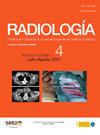对 COVID-19 使用未经培训的商业人工智能工具可略微提高对 COVID-19 肺炎影像的判读,尤其是对缺乏经验的读者而言。
IF 1.1
Q3 RADIOLOGY, NUCLEAR MEDICINE & MEDICAL IMAGING
引用次数: 0
摘要
我们的目标是评估人工智能(AI)工具在接受过非COVID-19肺炎病理培训后,对具有不同专业水平的胸片读者诊断COVID-19肺炎的有用程度。方法收集疑似COVID-19肺炎的患者既往行胸片和数字断层合成的数据。金标准包括两名放射科专家的读数,他们评估了图像上COVID-19肺炎的存在和分布。六名医学生、两名放射学实习生和另外两名胸椎放射科专家作为额外的读者参与了研究。进行了两次x线片读数和第三次由AI胸腔护理套件工具支持的x线片读数。评估新冠肺炎的分布和概率,以及人工智能的贡献。分析了一致性和诊断性能。结果113例患者中56例出现肺混浊,女性占52.2%,平均年龄50.70±14.9岁。对金标准的认同在学生、实习生和放射科医生之间存在差异。当使用人工智能时,六名学生中有四名没有显著改善。学生使用人工智能并没有提高COVID-19肺炎的诊断性能,但确实缩小了与更专业的放射科医生的诊断性能差异。此外,它对轻度肺炎的解释比严重肺炎和正常x线表现的影响更大。人工智能解决的问题比产生的问题更多,尤其是在学生中(31.30%比8.32%),其次是实习生(14.45%比5.7%)和放射科医生(10.05%比6.15%)。结论对于专家和经验不足的放射科医生来说,该商业人工智能工具对疑似COVID-19肺炎患者的胸片读数没有影响。然而,它有助于评估没有经验的读者和轻度肺炎的情况下。本文章由计算机程序翻译,如有差异,请以英文原文为准。

Usar una herramienta comercial de inteligencia artificial no entrenada para COVID-19 mejora ligeramente la interpretación de las radiografías con neumonía COVID-19, especialmente entre lectores inexpertos
Introduction
Our objective is to evaluate how useful an artificial intelligence (AI) tool is to chest radiograph readers with various levels of expertise for the diagnosis of COVID-19 pneumonia when the tool has been trained on a non-COVID-19 pneumonia pathology.
Methods
Data was collected for patients who had previously undergone a chest radiograph and digital tomosynthesis due to suspected COVID-19 pneumonia. The gold standard consisted of the readings of two expert radiologists who assessed the presence and distribution of COVID-19 pneumonia on the images. Six medical students, two radiology trainees, and two other expert thoracic radiologists participated as additional readers. Two radiograph readings and a third supported by the AI Thoracic Care Suite tool were performed. COVID-19 pneumonia distribution and probability were assessed along with the contribution made by AI. Agreement and diagnostic performance were analysed.
Results
The sample consisted of 113 cases, of which 56 displayed lung opacities, 52.2% were female, and the mean age was 50.70 ± 14.9. Agreement with the gold standard differed between students, trainees, and radiologists. There was a non-significant improvement for four of the six students when AI was used. The use of AI by students did not improve the COVID-19 pneumonia diagnostic performance but it did reduce the difference in diagnostic performance with the more expert radiologists. Furthermore, it had more influence on the interpretation of mild pneumonia than severe pneumonia and normal radiograph findings. AI resolved more doubts than it generated, especially among students (31.30 vs 8.32%), followed by trainees (14.45 vs 5.7%) and radiologists (10.05% vs 6.15%).
Conclusion
For expert and lesser experienced radiologists, this commercial AI tool has shown no impact on chest radiograph readings of patients with suspected COVID-19 pneumonia. However, it aided the assessment of inexperienced readers and in cases of mild pneumonia.
求助全文
通过发布文献求助,成功后即可免费获取论文全文。
去求助
来源期刊

RADIOLOGIA
RADIOLOGY, NUCLEAR MEDICINE & MEDICAL IMAGING-
CiteScore
1.60
自引率
7.70%
发文量
105
审稿时长
52 days
期刊介绍:
La mejor revista para conocer de primera mano los originales más relevantes en la especialidad y las revisiones, casos y notas clínicas de mayor interés profesional. Además es la Publicación Oficial de la Sociedad Española de Radiología Médica.
 求助内容:
求助内容: 应助结果提醒方式:
应助结果提醒方式:


